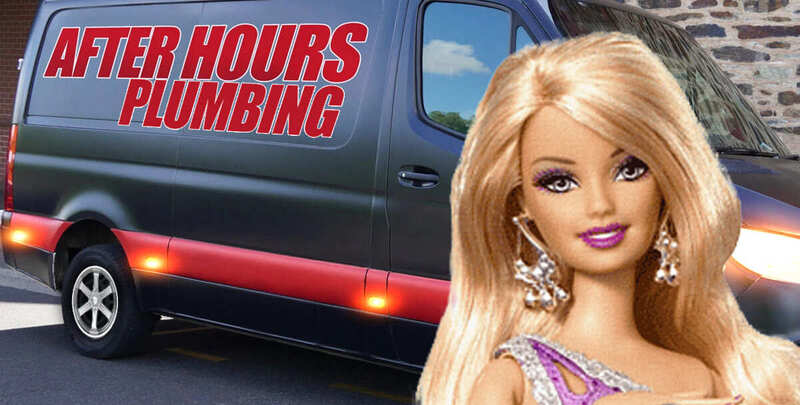How Do I Fix Low Water Pressure in My Shower?

"How do I fix low water pressure in my shower?" It's a common question many people ask when they step under the shower early in the morning only to be greeted by a weak trickle instead of an awakening blast of hot water.
Whether you’ve experienced a sudden and unexpected drop in shower water pressure, or it has always been less than satisfactory, there could be several possible causes behind your restricted water flow. Luckily, many of the common culprits are easy to address, whether with some basic DIY prowess or the expertise of a licensed plumber.
Understanding the common causes of low water pressure in the shower is the first all-important step towards fixing the problem.
Common Causes of Low Shower Water Pressure
Low pressure in the shower comes down to various possible causes. They can include things like:
- Mineral deposits clogging the shower head
- A partially closed valve
- General plumbing system problems
- Hot water system issues
- Problems with the mixing valve or water pressure regulator
Determining exactly why you have excessively low pressure is the first step toward restoring your water flow and getting your shower plumbing back to peak working condition.

Check for a Clogged Shower Head
A clogged or blocked showerhead is one of the most common answers to the question “Why do I have low water pressure in my shower?” It can also be a common cause of a leaking shower head.
Over time, mineral deposits build up inside the tiny holes of your shower head. These deposits effectively restrict water flow and affect your shower pressure. To fix the problem, unscrew the shower head and soak in vinegar overnight to dissolve the build-up. Scrub the head with a soft brush or clean out the small holes with a pin.
Many low-flow showerheads come with a flow restrictor; you’ll find it typically located inside the fitting. You might read some articles that suggest you remove the restrictor to improve the flow. Here in Australia, doing that may breach the water efficiency laws in your state and void your compliance with Water Efficiency and Labelling Standards (WELS). If the problem persists, consider replacing your old showerhead with a new one designed for better flow rate.
Inspect Your Home’s Water Supply and Shut Off Valve
If you’re experiencing low water pressure in your shower, the issue might be with your home’s plumbing system rather than the shower head itself. A good starting point is to check the shut-off valve, which controls your water supply. A partially closed valve can reduce water flow and cause a noticeable drop in water pressure. Adjusting it can fix the problem, but only if the valve was partially closed to begin with.
Make sure the supply line is fully open and check other bathroom taps to see if the problem is confined to just the shower or elsewhere too. If the whole house has low pressure, the issue might lie within the main water supply line. A faulty water pressure regulator can also cause low shower water pressure. Installing a new one will help you to maintain a safe water pressure range.
If adjusting the valves doesn’t help, a licensed plumber can find hidden plumbing issues.
Look for Leaking or Clogged Pipes
Leaking or clogged pipes can reduce water pressure in your shower by obstructing water flow long before it even reaches the shower head.
Old pipes experience corrosion over time, leading to blockages or narrowed supply lines. A small leak in your home’s plumbing system can divert the water supply and cause a drop in water pressure. Be on the lookout for these things:
- signs of moisture
- water stains
- an unexpected increase in your water bill
A partially blocked supply line can also affect your shower pressure if mineral deposits or debris are present. If you suspect hidden leaks or clogged pipes, a licensed plumber can inspect your plumbing system and restore your water flow to a suitable level.
Examine Your Water Heater and Mixing Valve
If the low water pressure in your shower seems to affect only your hot water, chances are the problem relates to your hot water system.
A faulty water heater, hot water tank or mixing valve can cause an inconsistent flow rate. The mixing valve balances hot and cold water. If it wears out and impacts water flow, this can cause a drop in water pressure. Sediment build-up inside the water heater tank can also affect its performance and cause low pressure when using hot water.
One of the more effective ways to either confirm or rule out this possibility is to see if the issue affects all taps in your house or just the shower. If the problem persists, a licensed plumber can inspect your hot water system. If the issue is with a worn out mixing valve, they can swap it out with a new one and ensure your hot water system delivers water flow at the level you need.

When to Call a Licensed Plumber for Improving Water Pressure
Some plumbing issues causing low water pressure in your shower require a licensed plumber to diagnose and fix them properly. If you’ve tried the basics and still have low pressure, it’s time to call in a professional. A qualified plumber can find and fix hidden problems that may affect your water flow. Common reasons to seek expert help include:
- Leaking pipes that reduce shower pressure and waste water.
- Clogged pipes or old pipes restricting the water supply line.
- Installing or replacing a pressure reducing valve for your whole house (using a licensed plumber is a legal requirement here).
- Issues with your hot water system, mixing valve or water heater.
- A partially closed shut-off valve or supply line that needs to be adjusted by a professional.
- Your brand new shower head is still leaking.
If you can’t find an obvious answer to the question “What is causing low water pressure in my shower?”, a licensed plumber can inspect your home’s plumbing system and get adequate water flow back.
Shower Stronger, Refresh Faster
Dealing with low water pressure in your shower can be a real pain but the good news is many fixes are easy.
A clogged shower head or partially closed valve might be restricting water flow. In some cases, leaking pipes, a faulty mixing valve or an old hot water system may cause the drop in water pressure. Simple solutions like cleaning your shower head, checking your water supply line or adjusting your pressure regulator can help.
If the problem persists, a licensed plumber can inspect your home’s plumbing system and get sufficient water flow back. With the right fixes, you can have a powerful, refreshing shower experience every day.
Please note: Thanks for reading our blog “How Do I Fix Low Water Pressure in My Shower?”. This information is provided for advice purposes only. Regulations differ from state to state, so please consult your local authorities or an industry professional before proceeding with any work. See our Terms & Conditions here.
